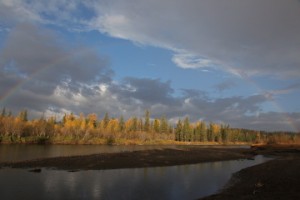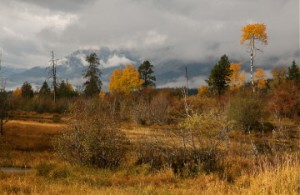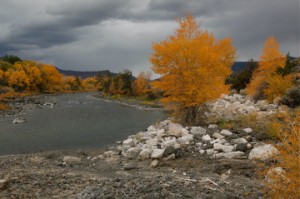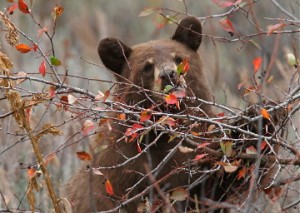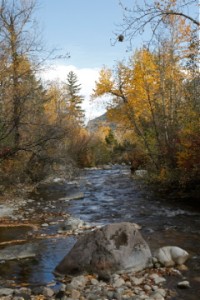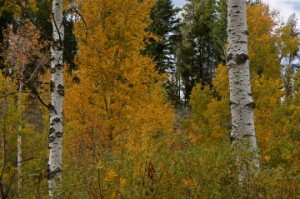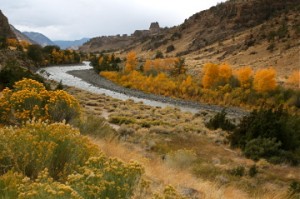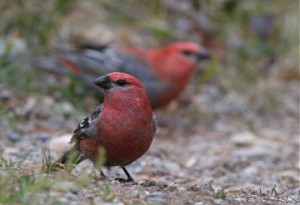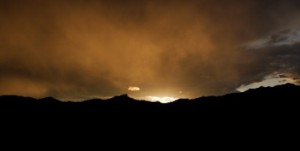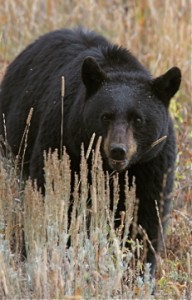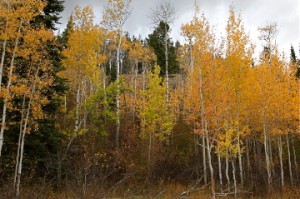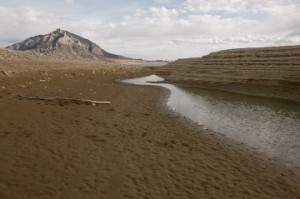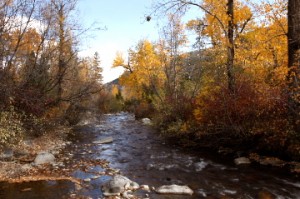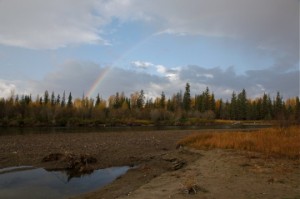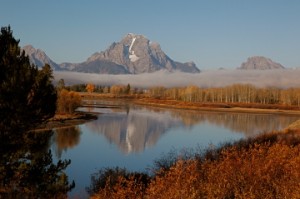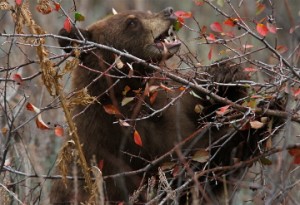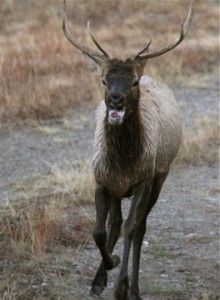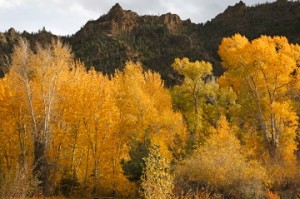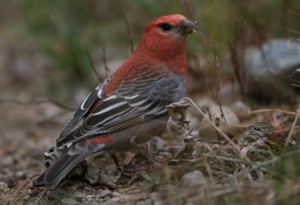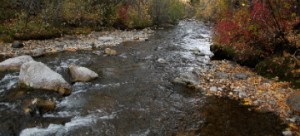Grand Teton Fall 2010
No shortage of beautiful scenery to view in this park. It is the sister park to its larger cousin – Yellowstone. Located to the south of Yellowstone, the Teton Range (part of the Rocky Mountains), rises along the Snake River Valley (north to south) along a 40 mile long by 7-9 mile wide active fault- block mountain front system. The glaciated range is composed of a series of horns and aretes (thin ridge of rock) separated by U shaped valleys headed by cirques (valley head formed at the head of a glacier by erosion) and ended by moraines. Glacial debris impounds a series of interconnected lakes at the foot of the range. These lakes mirror the mountain range doubling their prominence. The Snake River drainage basin cuts through the valley of about 50 miles of the more than 1000 mile long Snake River. As it winds through the park it is fed by 3 major tributaries; Pacific Creek, Buffalo Fork, and the Gros Ventre River. Because of the Continental Divide (the Divide is a topographic feature that separates Pacific Ocean and Atlantic Ocean water drainages) the Snake River flows west towards the Pacific via the Columbia River. The Yellowstone River which is on the other side of the Continental Divide flows toward the Atlantic via the Gulf.
The Grand Teton National Park was established some years after Yellowstone in 1929 (not a good year for park funding). It encompasses 484 square miles. The genesis of present -day Grand Teton National Park was mired in controversy that lasted for decades. Animosity toward expanding government control and a perceived loss of individual and property ownership freedoms fueled anti-park sentiments in Jackson (south) and in Idaho on the park’s western border that nearly derailed establishment of the park. By contrast, Yellowstone benefited from expedient and near universal agreement for its creation in 1872. The world’s first national park took only 2 years from the idea to reality whereas Grand Teton took decades. There are many significant compromises to allow for the creation of this park and local resentment towards it. These included: 1) protection of existing grazing rights, 2) permission to allow for elk hunting within park boundaries to control herds, 3) no future presidential proclamation could be used to create a national monument in Wyoming, 4) continuance of certain existing uses and access rights to forest lands and inholder properties and 5) reimbursement to Teton County for lost tax revenue. The park was finally established to protect the area’s spectacular scenic values and the abundant native plant and wildlife.
Elk and moose are in higher concentrations here than in Yellowstone. Nearby National Elk Refuge has the highest concentration of wintering elk in the world. Aquatic environments create great merging zones that have different habitats. The park has many different ecosystems that include forests, sagebrush flats, riparian corridors and wetlands, and alpine areas. At all elevations, geology and available water determine the type of vegetation, which in turn controls the variety, abundance and distribution of wildlife.
